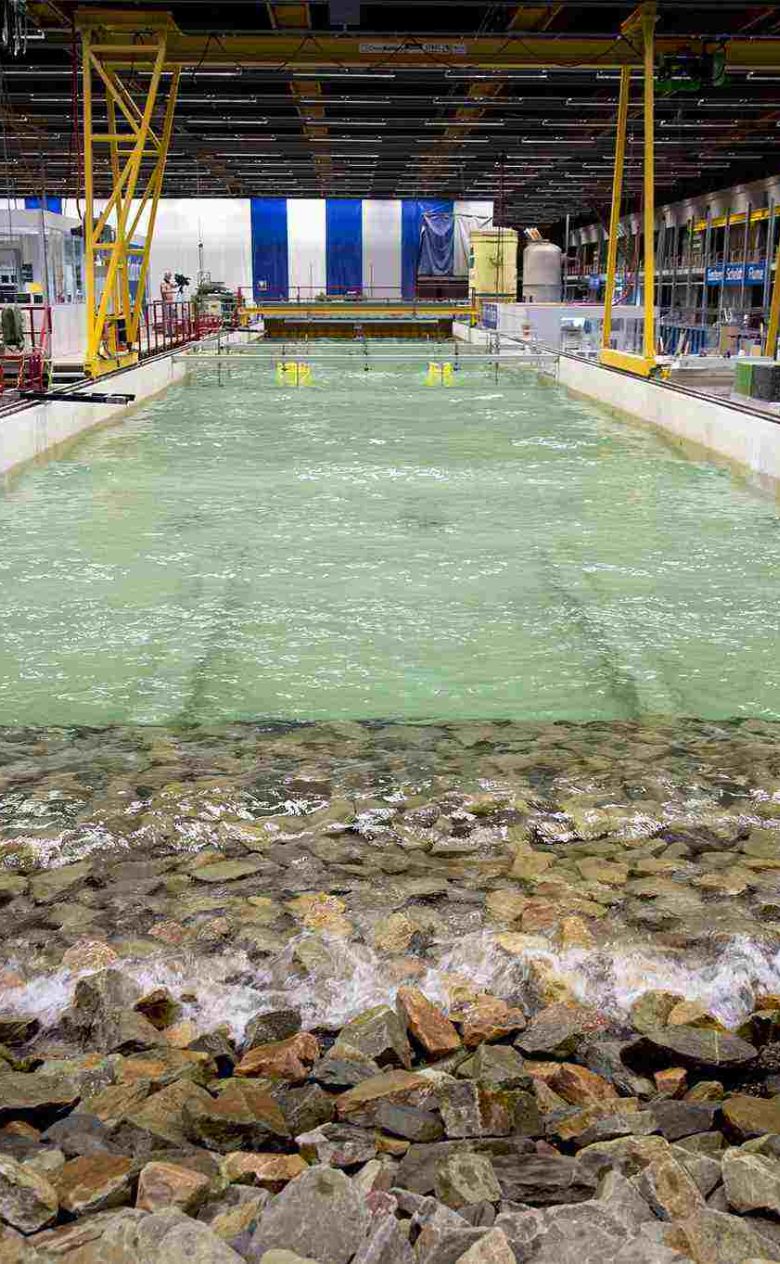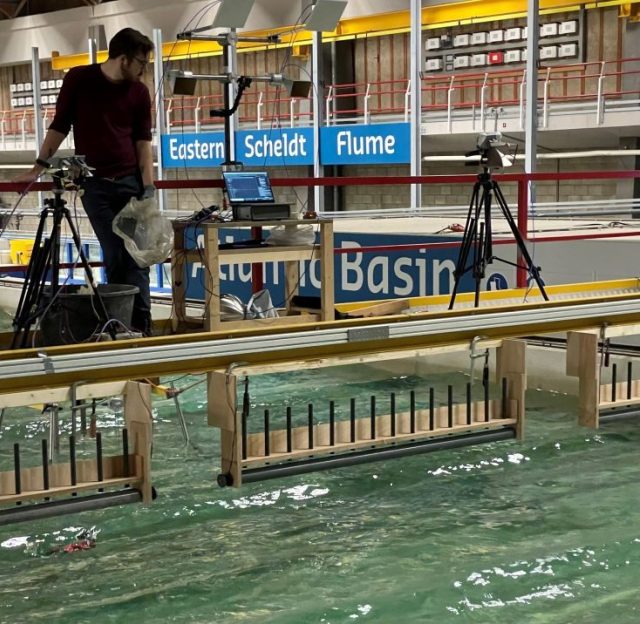Tracking plastics from space
Deltares is working with the European Space Agency (ESA) and guest researchers from all over Europe (Spain, Portugal, Scotland, Germany and the Netherlands) to see whether satellites can track plastics in the ocean. By following plastics from space, we can watch a much larger area to investigate where the plastics come from and where they end up. That information can be used to devise specific measures and see whether they work. The satellites pass repeatedly over the same area and so they supply much more information. At present, that can't be done at this scale with other monitoring methods.

Waves on the ocean
The research will be conducted in the Atlantic Basin at Deltares. In this basin, which measures 650 m², a range of wave patterns can be simulated, including waves that you only find at sea. The instruments usually found on a satellite are being tested here. Do these instruments also work for plastics? Most researchers are optimistic.
Anton de Fockert, Deltares flow expert: ‘Plastics disturb ocean wave patterns and the satellite measures that disturbance. This is a European venture: researchers from countries including Portugal, Spain and Scotland are now also working with our basin to see whether they need to make adjustments to their instruments or to determine the best frequencies for detecting the plastics.’

The next step
Once the tests have been completed in January 2022, we will know whether we can track plastics with the satellite that is already in orbit. If not, a decision could be made to produce a dedicated satellite. Peter de Maagt of ESA: ‘It is clear that European countries see this as a great opportunity to tackle plastic pollution in the sea’. Anton de Fockert: ‘Deltares is already involved in a range of studies looking at plastics. Using observations and models, we can establish a clearer picture of the drift patterns of the plastics and where they come from. That means we can take preventive action in the right place, often on land. And then we go back to the satellite observations to monitor the effect. So the satellite monitoring is important for studying plastics in several respects. Other colleagues are looking at how long plastics stay in the water or the soil and whether that is harmful. It looks as though this study will allow us to make major improvements to our models and information. That will allow us to do more about the problem. Which is good news: not just for ocean life but, in the end, for people as well.’
Other research with satellites
Deltares uses other data from satellites to learn about water levels, waves and water quality. In the case of algal blooms, for example. We use platforms like BlueEarth to process satellite data and to make them available to anyone who wants to use them.
You have not yet indicated whether you want to accept or reject cookies. This means that this element cannot be displayed.
Or go directly to:

